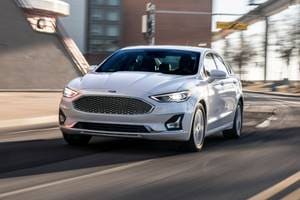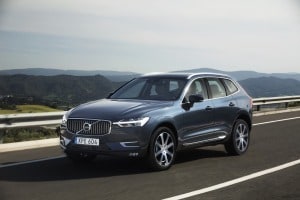A Strong Finish to 2012 Auto Sales Is Becoming Easier to Believe In
New car sales have hit post-recession highs so far this year and October brought more of the same, despite failing to meet forecasts due to the impact on sales from Hurricane Sandy. What's more, there are a growing number of signs that spending on new cars could well continue through the end of the year. While concerns about economic weakness in Europe and China and fears of the impact of the impending fiscal cliff at home have slowed business investment and hiring in recent months, recession-weary consumers have plunged ahead with their wallets open. High stock prices and firming home values have bolstered consumer confidence and in turn willingness to spend. In addition, personal income has shown renewed growth recently and consumer expectations about the future have improved, suggesting more spending to come.
New car sales will also benefit this quarter from increased lease terminations, showing year over year growth for the first time since early 2010. Another unexpected boost could come from Hurricane Sandy as consumers replace vehicles destroyed or damaged by the storm. Meanwhile, all of the plus factors for auto sales that have been in place this year should continue to support sales growth through the end of the year: aging vehicles, increased credit availability, pent-up demand.
Consumers Feeling Groovy
The University of Michigan's Consumer Sentiment Index soared to a post-recession high of 82.6 at the end of October, continuing a general upward trend that began after confidence plunged in August 2011 with the U.S. debt downgrade and fiscal crisis. Importantly, after reversing this summer in the face of signs of economic weakness and general uncertainty, sentiment recovered and gained strength. Consumers are feeling more upbeat about both current and future conditions. Even recent bouts of rising gas prices did not destroy these positive vibes (and gas prices have been falling again during October).
Buoyant consumer spirits would seem to be misplaced against a backdrop of fiscal uncertainty, global economic weakness, and a looming too-close-to-call presidential election. Businesses have taken the opposite view and hunkered down in recent months, decreasing capital investment and hiring while waiting to see what the events of the coming months will bring. So, what's driving consumer optimism? Simply put, consumers are feeling wealthier - and that's in spite of a lack of substantial income growth. Rising demand and tightening supply for housing have finally nudged that market into recovery and home prices have begun to rise again, with the promise of rising more. In addition, the stock market has shown strength and stability in recent months, with the Dow Jones Industrial Average hovering around post-recession highs of over 13,000 since late July. Even for those without sizable holdings, a strong stock market conveys confidence in economic conditions. As we saw pre-recession and during the recovery to date, consumers are more inclined to make large purchases, such as new vehicles, when they feel wealthier.


Income Up, Inflation Down
Consumer spirits also may be reacting to actually having more money to spend. Personal income rose a solid 0.4 percent in September, the largest month over month rise since March. The economy stands to benefit substantially from increases in income, since U.S. consumers tend to spend about 95 cents of every extra dollar earned and consumption accounts for roughly 70 percent of gross domestic product (GDP). Although an equal rise in headline inflation wiped out any real income gains in September, falling gas prices in October should have since provided consumers with some extra spending power. Already, in September, consumer spending showed strength, increasing 0.8 percent over August to beat expectations in the largest jump since February. Part of this increase was due to higher gas prices, but, on a positive note, spending on autos also contributed substantially, confirming that consumers were undaunted in the face of inflation - which bodes well for their willingness to spend on autos and other goods when inflation falls.

More Lease Terminations Expected This Quarter
In addition to higher confidence and fatter wallets, another potential driver of strong new car sales this quarter is the expected rise in lease returners. This growth in lease returners reflects the slowdown in leasing during the recession that bottomed out in 2009, resulting in many fewer lessees available to return to market from 2010 to 2012 to date. The revival of leasing is expected to noticeably impact new car sales in 2013, but its impact could be felt this quarter as well. October 2012 is expected to be the first month since early 2010 in which lease returns increase over the previous year. Lease rates from two to five years ago indicate that expected terminations could increase the pool of likely new car buyers by 1.5 to 2.0 percent for the quarter.
The Silver Lining from Hurricane Sandy
This week a new force emerged to support auto sales in the fourth quarter: Hurricane Sandy. While October sales were likely down around 3 percent, according to Edmunds.com estimates, the majority of these sales should be made up in November. In addition, November and December sales could receive a boost from buyers returning to the market to replace vehicles that were destroyed or damaged by the storm. Hurricane Katrina, for example, affected a smaller, much less populated area and is estimated to have damaged about a half million vehicles. Given the differences in geographic and population impacts between the two storms, some analysts are already suggesting that Sandy's impact could be higher, but even damage to 100,000 vehicles would boost auto sales 3 to 4 percent for the quarter.
A Little Help from Some Old Friends
The above factors will combine with some existing forces to drive sales. The need to replace aging cars will continue to push consumers back to the market, while the enticing new products (for example, the 2013 Ram 1500, the 2013 Nissan Altima, and the 2013 Honda Accord) and creative incentives will pull them there. Plus, increasing competition among automakers could result in increased incentives for at least some consumers. Finally, the economy remains shaky enough that deal-seeking consumers should once again respond to automaker messaging about end-of the-year sales events and bargains, resulting in a strong December as in the past three years.
All of this is not to say that the uncertainty and risk from political and economic issues at home and abroad has dissipated - it hasn't, although some are contending that peak uncertainty has happened. In particular, the $600 billion set of expiring tax rates and benefits and pending automatic government spending cuts commonly known as the fiscal cliff still looms at the end of the year. Rather, the message here is that the resilience of the American consumer has shown itself a force with which to be reckoned.
Lacey Plache is the Chief Economist for Edmunds.com. Follow @AutoEconomist on Twitter.





